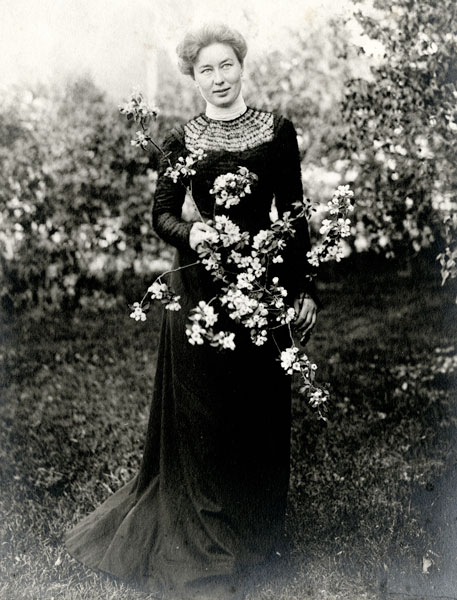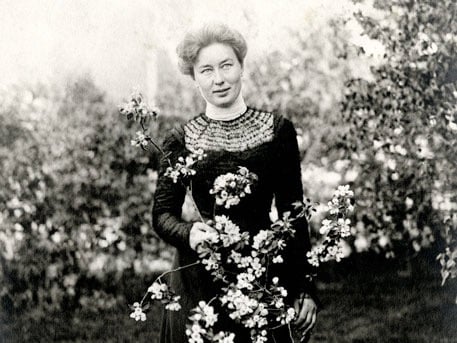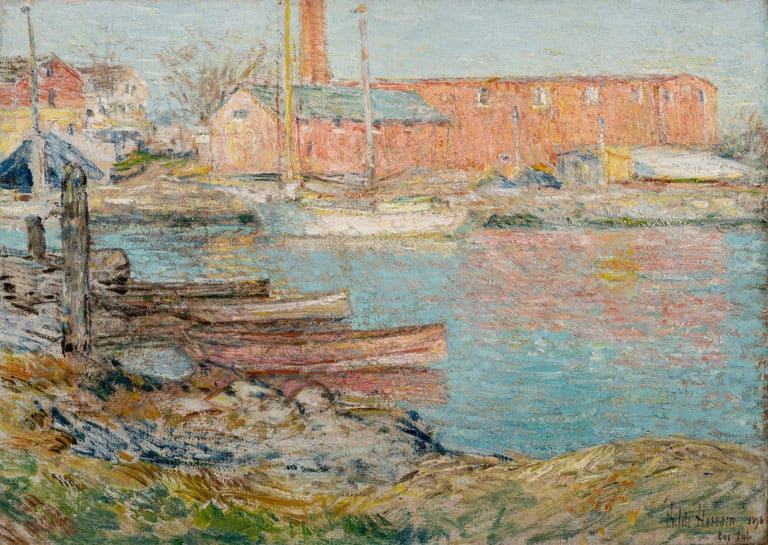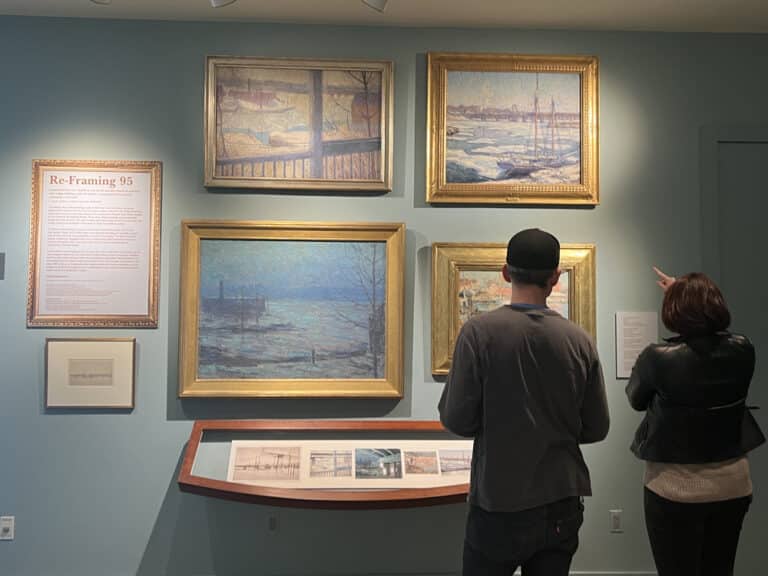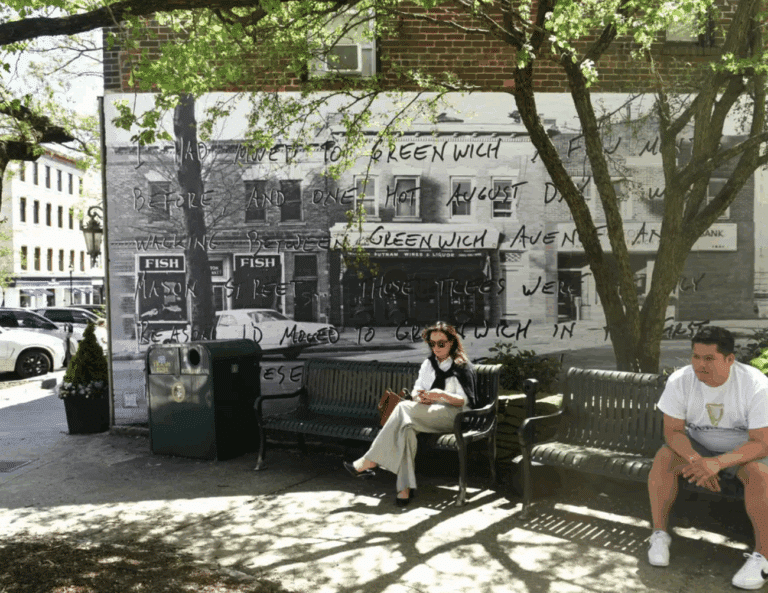Constant attributed her love for arranging flowers to a Japanese gentleman staying at her home, probably Genjiro Yeto. She recalled when he placed a single red rose in an old decanter: “From this time on…flower arranging has always been my foremost interest.”
Her early arrangements are known only through letters to her mother. In October 1902 she wrote, “Elmer & I did the decorations—festooned clematis back of the little raised platform thro big jars of bay flanking the sides and then for the center of interest—one huge mass of pink dahlias coming up in the circle of the grand piano…people said it was the most effective decoration they had ever seen on such a large scale and yet all so simple.” This boldness, simplicity and innovation would mark her arrangements throughout her life.
Her technique matured in the 1920s and 1930s. In 1935, she was awarded first prize for an arrangement of radishes, celery, red cabbage leaves, spinach and rhubarb in a tall clay pot. In 1939, in “recognition of her achievement in the Fine Art of Flower Arrangement,” she was invited to contribute to the New York World’s Fair. In 1952 the Constant Holley MacRae Award was offered for the first time. This bronze medal, made by Tiffany & Co., is a sweepstakes award presented by the Greenwich Garden Club. It was created to honor Constant MacRae who was acknowledged to be one of the nation’s foremost authorities on flower arranging. Due to the ephemeral nature of her art, however, it has been mostly forgotten and is preserved only in vintage photographs and letters currently in the William E. Finch, Jr. Archives.
In this letter Constant thanks her mother for the greens she had sent and describes her table decorations for the Thanksgiving day table. She writes “Mr. Hassam said it was the prettiest decoration he had ever seen.”
